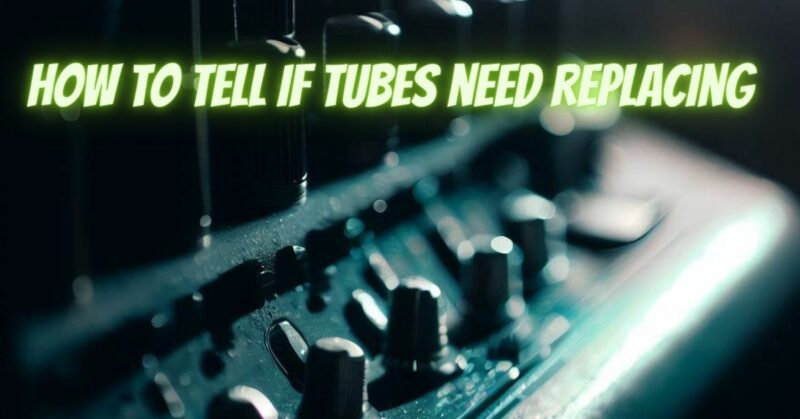Tubes play a crucial role in the performance and sound characteristics of tube amplifiers. Over time, tubes can wear out, impacting the overall sound quality and reliability of your amplifier. Recognizing the signs of tube degradation can help you determine if the tubes in your amp need replacement. In this article, we will outline common indicators that suggest tube replacement is necessary, allowing you to maintain optimal performance and sound reproduction.
- Diminished Sound Quality: One of the most noticeable signs of tube wear is a decline in sound quality. Listen for the following changes in your amplifier’s performance:
- Loss of clarity and detail in the sound reproduction.
- Increased background noise or hiss, especially when the amplifier is idle.
- Distortion, such as harshness, excessive grittiness, or muddiness in the sound.
- Reduced overall dynamic range or less pronounced frequency response.
- Loss of Power or Volume: As tubes degrade, you may experience a decrease in overall power or volume output from your amplifier. This can manifest as:
- Reduced maximum volume levels compared to previous performance.
- Difficulty reaching the same volume levels at a given gain setting.
- Weaker or less impactful bass response.
- Microphonic Noise: When tubes become microphonic, they can produce unwanted noise or ringing when subjected to vibrations. You may notice:
- Tapping or thumping noises coming from the amp when you lightly tap on the tubes.
- Ringing or oscillating sounds that persist even when the amp is not in use.
- Unusual noises that intensify when you adjust controls or tap on the amp chassis.
- Uneven or Unbalanced Performance: If one channel of your amplifier sounds noticeably different from the other or exhibits imbalances in volume, it may indicate a tube-related issue. Pay attention to:
- Imbalanced volume levels between the left and right channels.
- Differences in tonal characteristics or frequency response between channels.
- Uneven stereo imaging or soundstage representation.
- Age and Usage: Consider the age and usage of your tubes. As a general guideline, power tubes tend to last around 1,000 to 2,000 hours of use, while preamp tubes may last longer, ranging from 5,000 to 10,000 hours. If your tubes have exceeded their recommended lifespan or have been subject to extensive use, they are more likely to require replacement.
- Visual Inspection: Perform a visual inspection of the tubes for any visible signs of wear or damage:
- Look for tube elements that appear excessively dark or burned.
- Check for tubes that have a milky or hazy appearance.
- Inspect for loose or broken tube pins, as this can affect connectivity.
Conclusion:
By paying attention to the signs mentioned above, you can determine whether the tubes in your amplifier need replacement. Diminished sound quality, loss of power or volume, microphonic noise, uneven performance, tube age, and visual inspection can all provide valuable insights into tube wear and degradation. If you suspect that your tubes require replacement, consult the manufacturer’s recommendations for compatible replacements or seek guidance from a qualified technician. Regular maintenance and tube replacement ensure that your amplifier continues to deliver the warm and distinctive sound associated with tube amplification.


